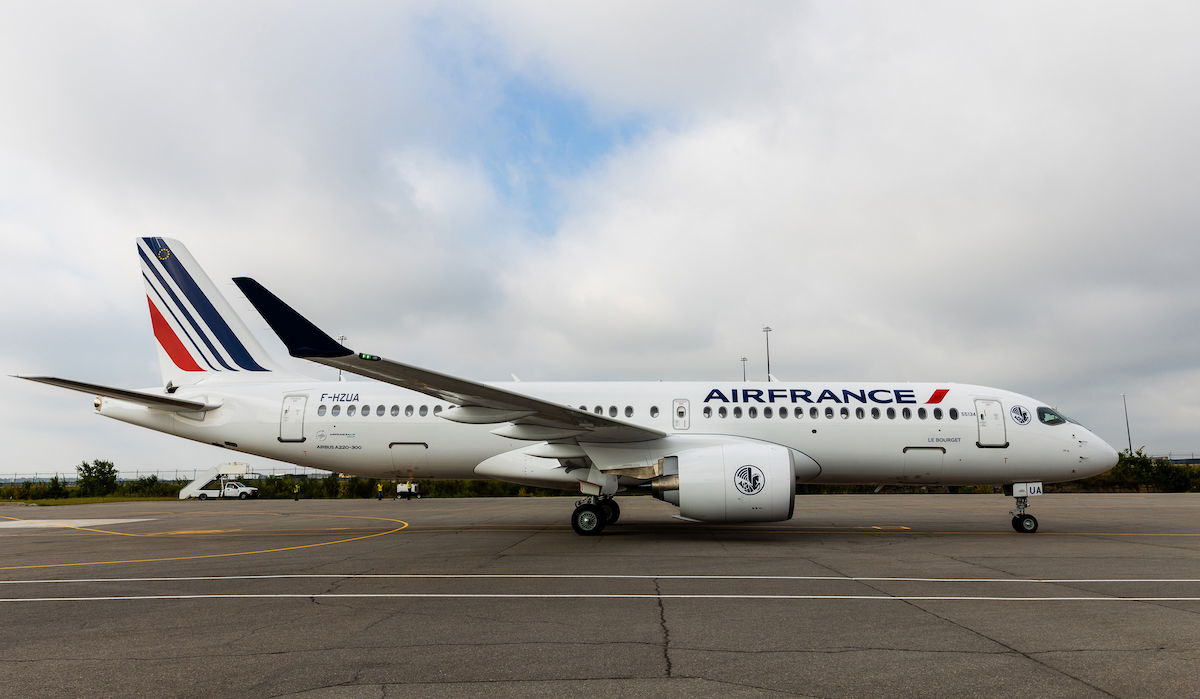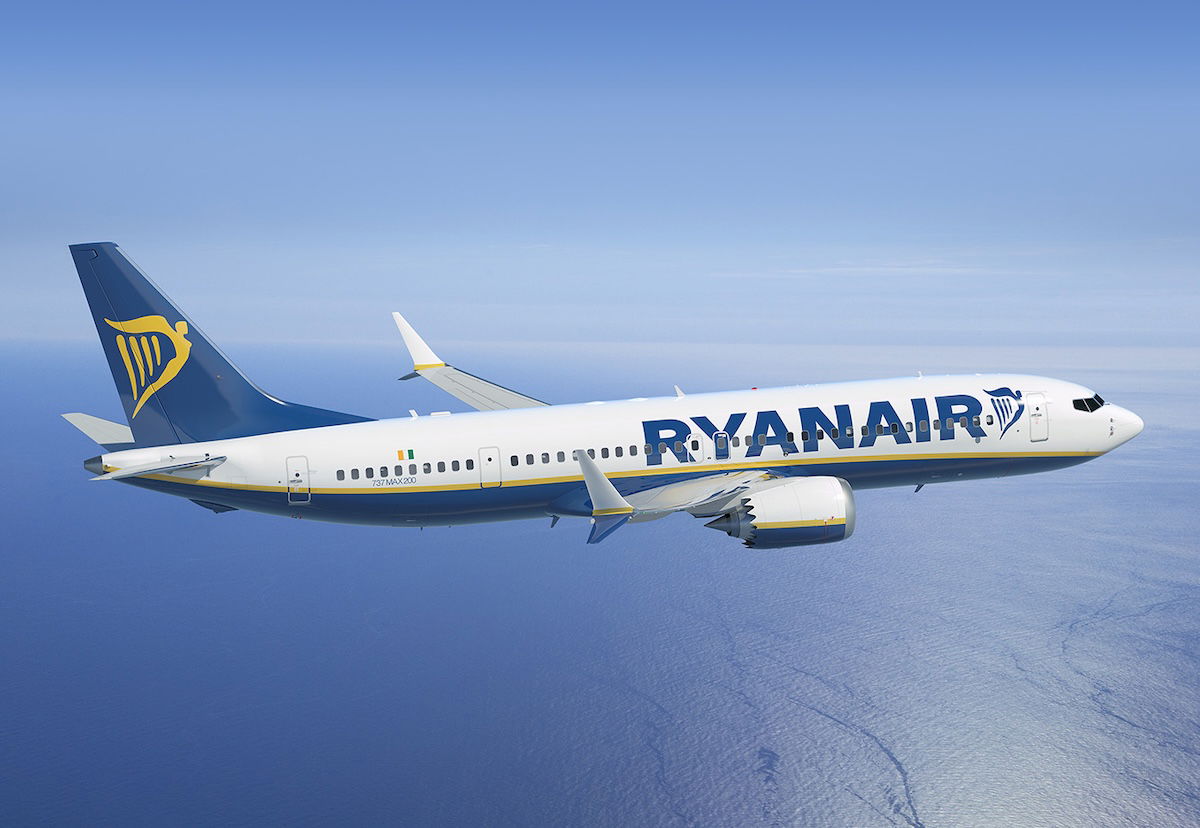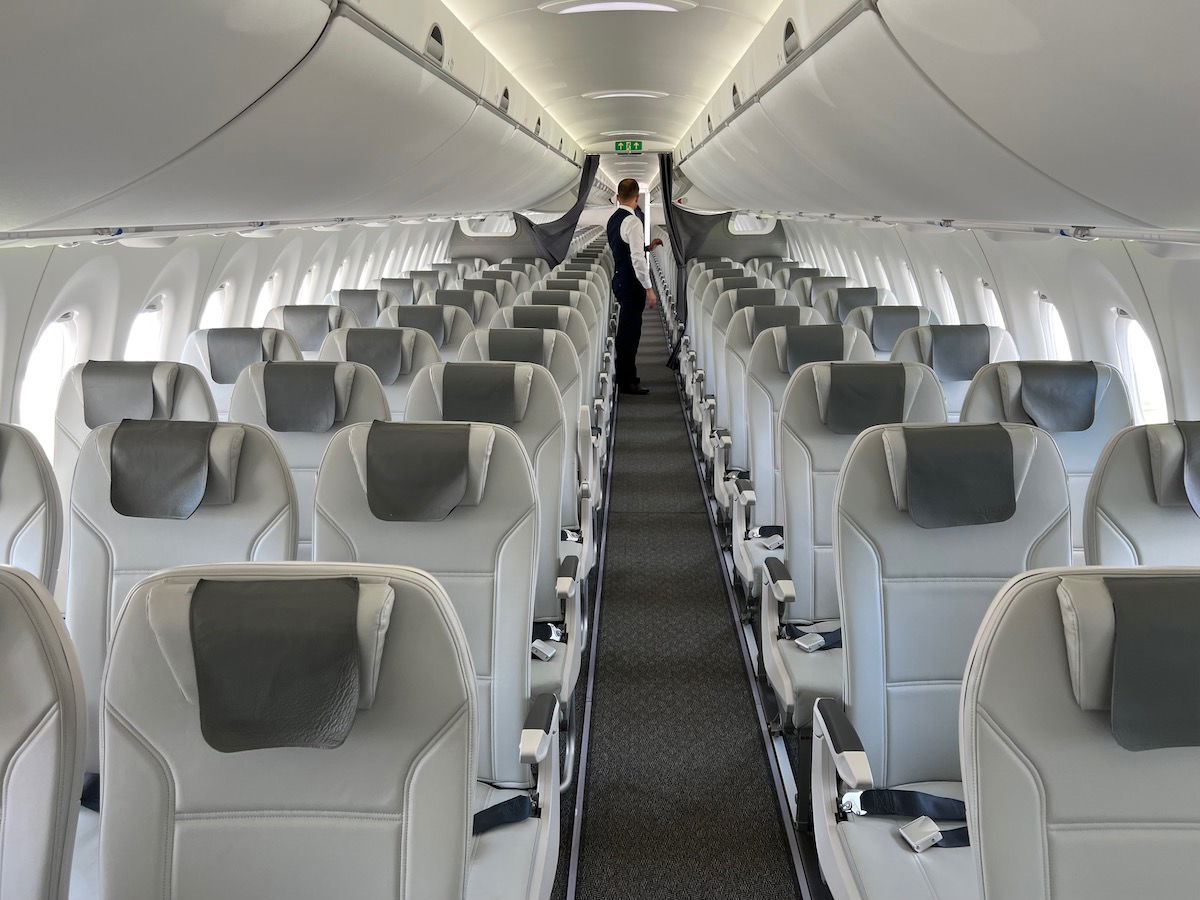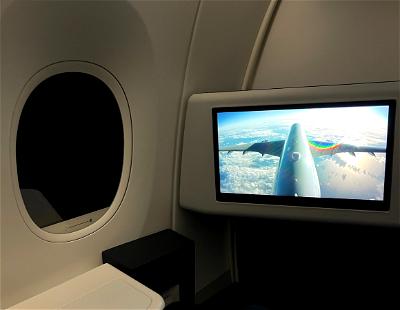The Airbus A220 (initially known as the Bombardier CSeries), is one of my favorite commercial aircraft. The plane has a comfortable cabin with a 2-3 layout, and generally decent legroom. However, that could soon change for some airlines, thanks to an update that Airbus is working on.
In this post:
Airbus plans high density Airbus A220, with 160 seats
Currently, the Airbus A220 has two variants — the A220-100 and A220-300. The larger A220-300 variant is certified for up to 149 passengers. Aircraft are certified to a maximum capacity, based on a variety of factors, including the ability to safely evacuate the plane.
There’s an interesting update when it comes to that. Airbus is planning to shortly start certification work on a new 160-seat version of the A220-300. This would be exactly the same size as the existing A220-300, with the only difference being a second set of exits over the wings, which are required in order to boost capacity in that way.

The hope is that this new version of the A220 will be certified by 2026. To be clear, airlines would have to specifically order this version of the aircraft, since the standard A220-300 will continue to have just one over wing exit. This is also separate from the rumored A220-500 that Airbus is eventually considering, which would be a stretched version of the A220-300.
This isn’t the first time that we’ve seen an aircraft manufacturer create a higher density variant of a jet, as it’s a pretty standard practice. For example, the Boeing 737 MAX 8 was evolved with the 737 MAX 8-200 variant. The jet has an extra exit near the back (like the 737 MAX 9), which boosts the plane’s maximum capacity from 178 seats to 200 seats.
This could make the A220 attractive to low cost carriers
I wouldn’t expect most full service airlines to spring for the higher density version of the A220, since they don’t need the extra capacity. However, I could see this change making the A220 more attractive for ultra low cost carriers.
Just how tight would be a 160-seat A220-300 be? airBaltic is one of the world’s largest A220 operators, and the airline has some A220-300s with 150 seats, meaning there are 30 rows, in a 2-3 configuration.

Wait, if the plane is certified for 149 passengers, how can airBaltic have a version with 150 seat? The airline just permanently blocks one middle seat on the plane, so that the maximum capacity is 149. With 150 seats, the typical seat pitch is 30″.
So if you were to add two rows, you’d be looking at seat pitch of around 28″, which is of course rough. And it’s probably even worse than that, since the second exit row would also require a bit more legroom, taking away from the overall space in the cabin.
Of course it’s possible that there are also efficiency gains elsewhere, by reducing the size of the galley and lavatories. While a 160-seat A220-300 would be less comfortable than the 149-seat version, it’s probably still more comfortable than most other planes operated by ultra low cost carriers, given the 2-3 layout. Only 20% of passengers have middle seats, compared to 33% of passengers on other aircraft, with a 3-3 layout.
One downside to increasing capacity from 150 seats to 160 seats is that an extra flight attendant will be required, increasing staffing from three to four flight attendants (one is needed for every 50 seats).
That’s not an issue if you can consistently fill those extra 10 seats with decent yields. However, very few flights are completely full (at least prior to standby passengers, etc.), so the math there will be marginal for many airlines.
Bottom line
Airbus is working on getting a new higher density version of the A220-300 certified. This will happen thanks to an extra set of exits over the wings, and it’ll boost the plane’s maximum capacity from 149 seats to 160 seats. Airlines will specifically have to order the aircraft this way, if they want the extra capacity.
This could very well make the plane more attractive to ultra low cost carriers, which have historically not shown much interest in the aircraft.
What do you make of plans for a high density A220-300?





Something of interest?
https://www.worldairlineawards.com/worlds-top-100-airlines-2025/
It seems that airlines learned quite a lot from canned sardines industry...
Old story,
https://leehamnews.com/2013/03/07/bombardier-confirms-160-seat-cseries
In 2013 the dimensions of the CS300 were changed. Length was increased from 38,0m to 38,7m to enable a 160 seat design. The 2013 LOPA shows a 28in pitch for all seat.
Don't sell an old cow as a new idea, Airbus.
I’m surprised 11 seats is worth an extra FA…
Depends how much you're paying them. Airbaltic flight attendants are earning less than €20k a year, even with 50% on-costs you just need 50 additional passengers a month paying €50 per segment to break even.
TAAG also fly a couple of A220s. Even a couple of additional pax on a run to Sao Tome could cover the monthly costs for the extra FA on an Angolan salary.
2-3 should have died with the DC-9. And this piece of waste should have died when Boeing tried to kill it and tragically failed.
lol. Ben, pray tell what value do comments like these provide?
More than your comments, Eurotrash.
Yeah, it’s such an abject failure that they have a 500-long waiting list for delivery slots, and LOT has just ordered another 84 of them.
I grew up surrounded by dumb Polacks. I know one when I see one, and LOT's full of them.
Actually ORD, knocking LOT is not very sensible today …. LOT jumped a staggering 40 places in the World Rankings published today … do take a peek …. :-)
https://www.worldairlineawards.com/worlds-top-100-airlines-2025/
Your comments already add little, this is blatantly racist. Why is this consistently ignored on OMAAT?
@Timtamtrak My comment calling someone boomer did not get published but such trash racist comments are being let through. Ben really needs to do more to moderate the comments or at the least hire a moderator. This is getting out of hand and this year has seen a large increase in racist insults being thrown in comments
Have you ever considered giving yourself a lobotomy, ORD? An auger through the eye socket would improve your sh-t personality immensely wou worthless seppo maggot.
Ben, your banner ads and popups are killing me lately. I visit your site every day and it routinely crashes my browser!
that is what a pop up blocker is for
Of course I have a popup blocker. I'm not using Netscape 1.0. His ads crash my browser.
There are browser extensions to suit every platform.
The real “uh oh” is the A220 remains unprofitable with a shrinking backlog.
How is the backlog shrinking, when they're adding both new customers and large orders, with no significant cancellations?
“Total net sales shrunk by 10 units since the beginning of last year. The aircraft also hasn’t picked up a single new order so far this year, instead suffering one cancellation. The backlog stood at just under 500 at the end of May.”
https://www.bloomberg.com/news/articles/2025-06-15/airbus-is-studying-simple-a220-stretch-to-revive-flagging-model
Oh no, only 500 on the order books? If that’s a failure, we’d better let Boeing know because their total 777X orders are around 500.
“Airbus needs to rekindle demand for the aircraft given the A220 has a dwindling backlog and remains unprofitable.”
The 777 has 1757 deliveries. 500 777x pre-orders, not in-production orders.
Not a single new order this year except those 80 planes LOT just ordered. LOL.
I don't see the A220 running out of orders anytime soon. But the real issue is indeed the profatibility and also that large parts of production are in the US.
He didn't say the aircraft is running out of order.
Sales have been slow over the past years compared to other narrowbody on offer
This seems like an ideal aircraft for Frontier - they have a bit of an issue finding routes that can handle 186 seats. A 160 seat aircraft would likely open up some thinner routes that can still be profitable.
The type rating for the A220's is BD500. So, there's a -100 and -300. Both variants are quite "lively" as they are. Adding that much more weight could make it a dog (like the B737-900) without a major engine increase. So, could this be the -500 variant?
Oh, and the 149 vs 150 seats will not require the extra flight attendant. And...I meant to say "...could this be the precursor to the -500 variant"{
One would think the change in tooling to add the second over wing exit would be a precursor to the -500 stretch. I doubt the added weight of the additional exit + 10/11 more pax and associated seats and such would turn the -300 into a “dog” although airBaltic would probably be borderline MTOW on their Tenerife and Gran Canaria routes.
How will adding extra seat "make it a dog"
It's the same with JAL electing to have 239 seats on their A350-1000 and BA having 331 seats.
The aircraft isn't being stretched, the MTOW probably won't be increased for this particular MOD.